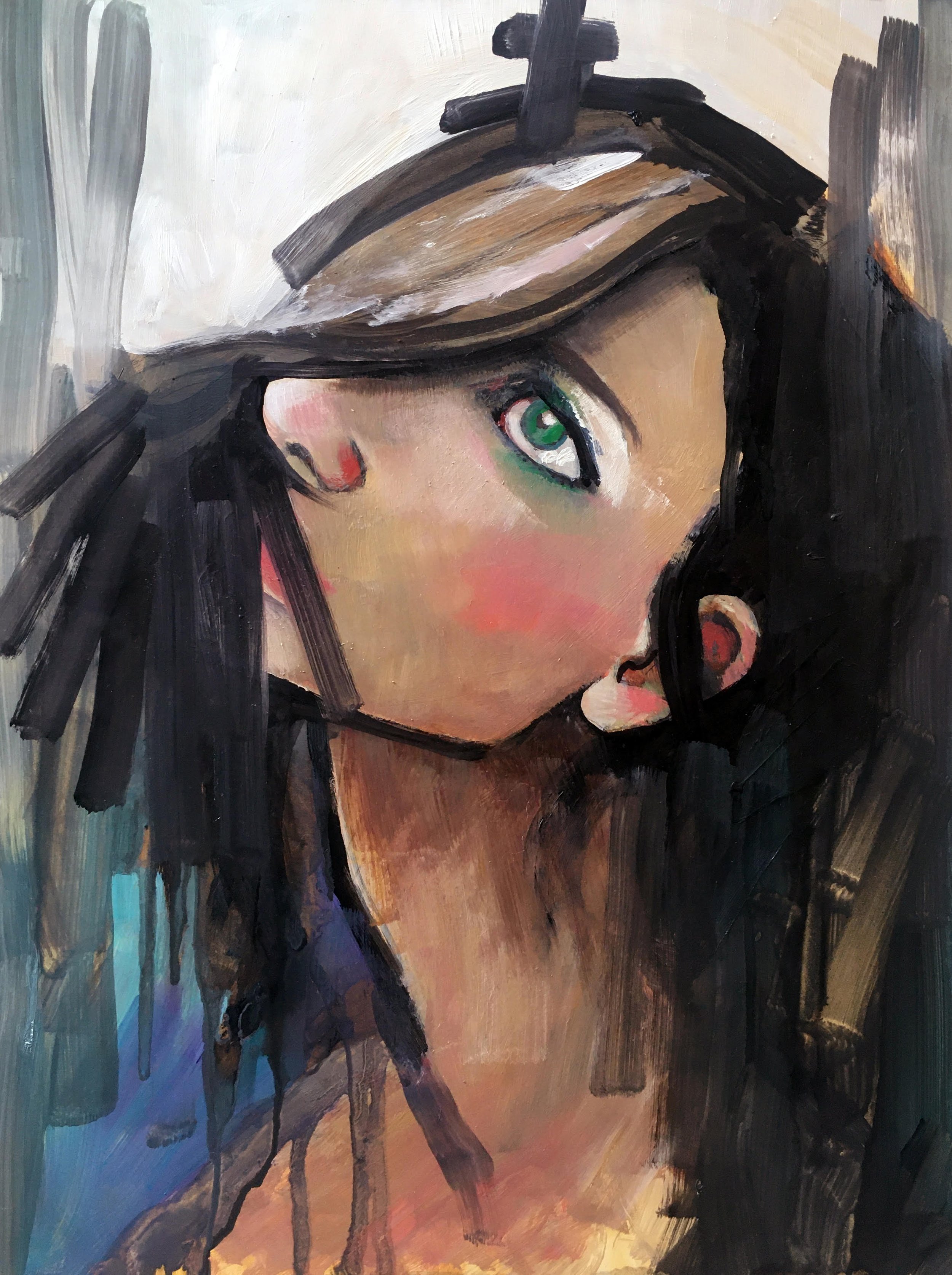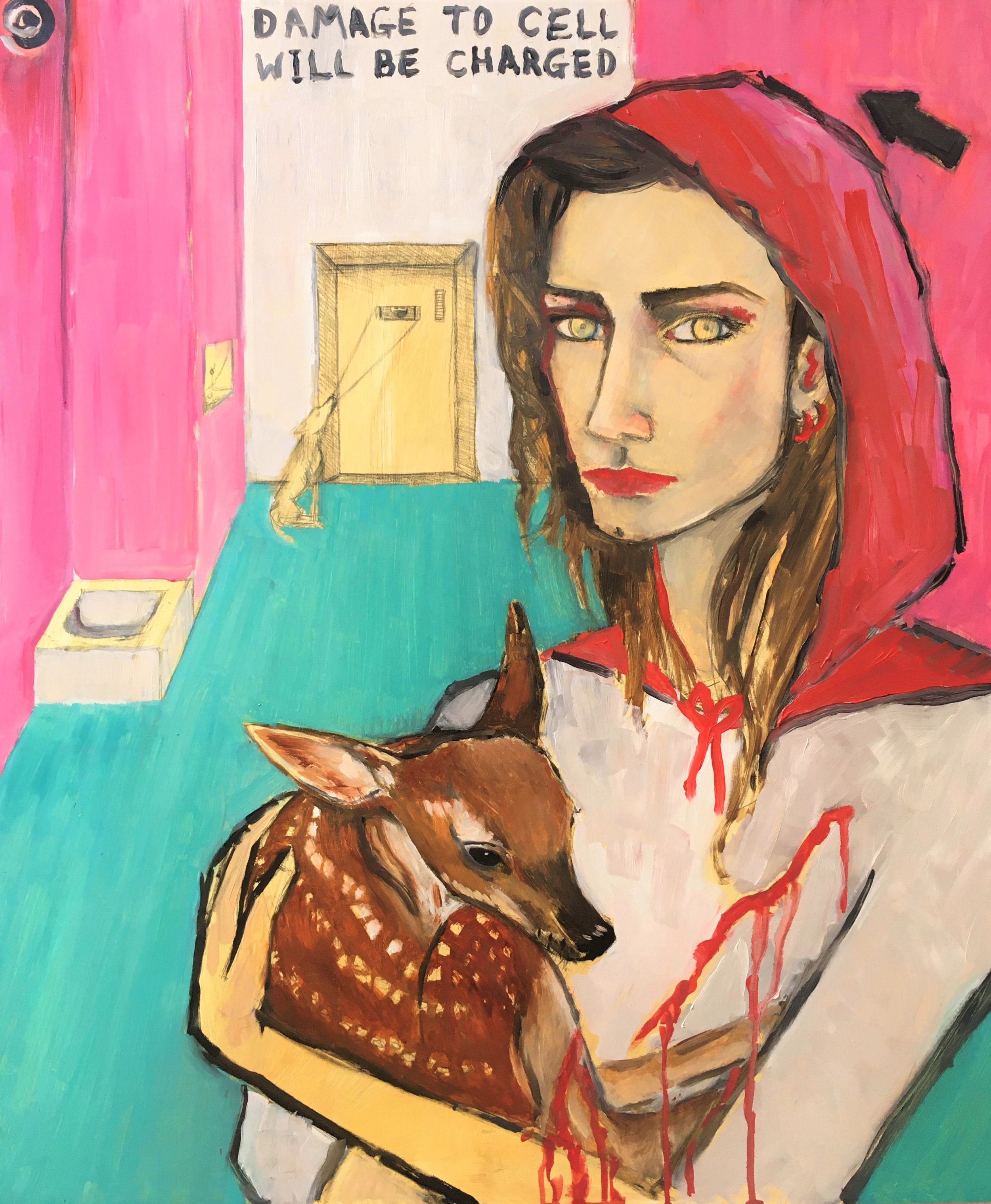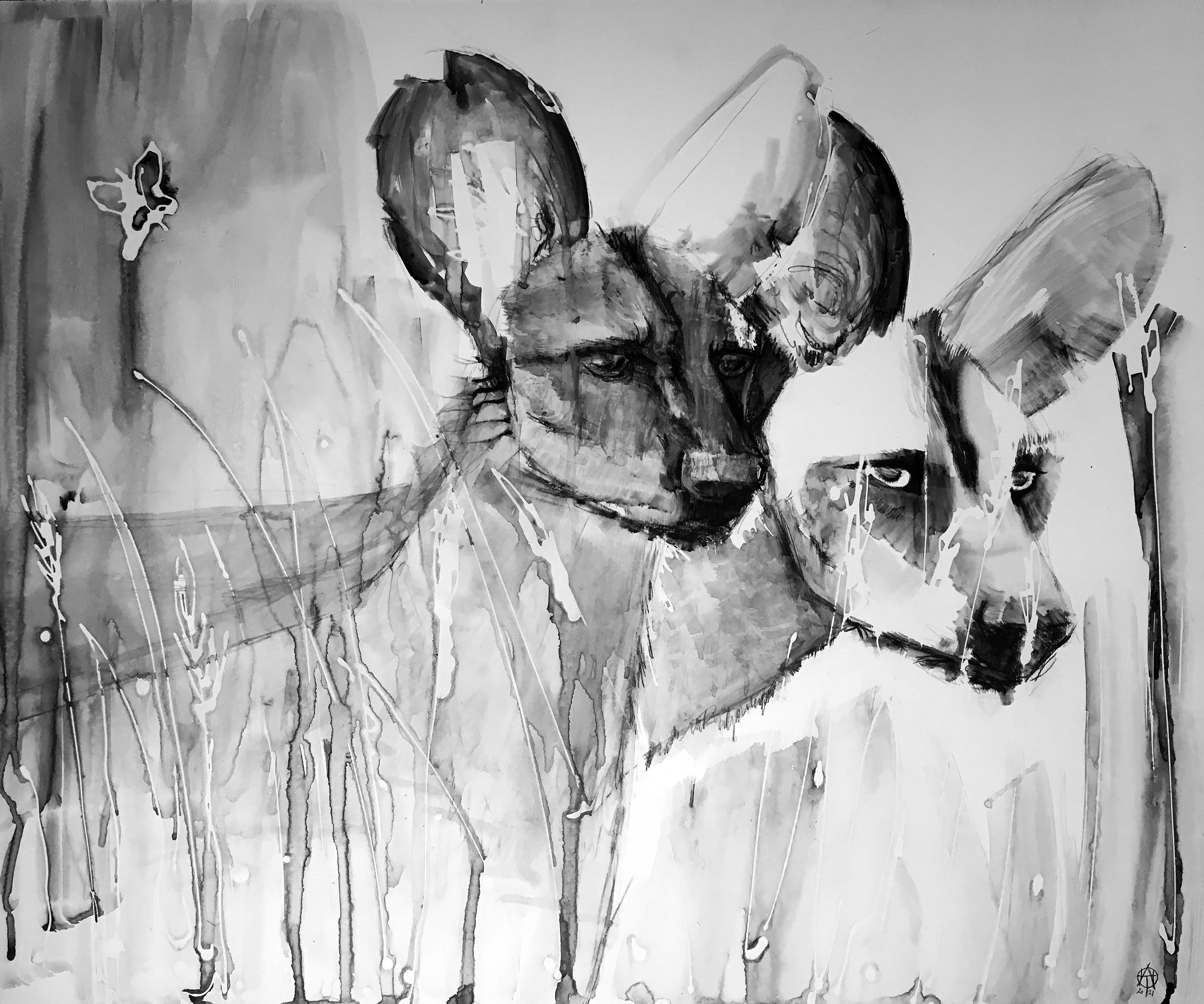Interview
Amy Tiffany Hemingway
Amy Tiffany Hemingway is a painter and illustrator.
She holds a Masters in Theology from the University of Oxford, and attended drawing classes at the Ruskin School of Art, Oxford.
What is your background and how did you start your journey in the art world?
“When I was young, I enjoyed living in my imagination. My mother was an artist and I started to draw wildlife around age six. I always loved animals and had pictures of wildlife all over my wall. At school, art was my favourite subject and I always spent my lunchtimes in the art department painting. I visited France and wandered around churches and cathedrals, drawing the statues. My heroine was Jeanne d’Arc, and I knew there was a great mystery behind the person of Yeshua. My mother took me to Florence where we visited the Uffizi and many sacred places.
I went to Oxford University to study Theology as I wanted to be certain whether or not Yeshua rose from the dead. During my degree, I also attended drawing classes every week at the Ruskin School of Art. I spent much of my time drawing portraits of fellow students or creating Biblical paintings for my tutors.
I realised I had a great passion for religious art, and could use my drawing skills to inspire faith and illustrate meaningful stories. I wanted to improve my historical knowledge, so I attended lectures in the Roots of Humanity at Oxford Quaternary Centre. I started volunteering on a Roman site in Kent and began creating illustrations using technical books from the library. These were soon published, and this led to my being employed by Oxford Archaeology and given professional training. For a decade I worked as an Archaeological Illustrator, which was very satisfying work as I was recording important artefacts and structures for posterity. I enjoyed painting reconstructions for book covers and visualising the past. I often dream of living in past times, when people were more connected to deeper meaning.”
“I was posted to Montpellier, France, for a year during which time I also created oil paintings for an exhibition in the Cathedral. I then moved to South Africa and travelled the country for around ten years, rescuing animals and running art classes for children. I had solo art shows in Cape Town and East London.
I am currently focusing on new art projects inspired by both my life experiences and themes which I feel are important. I am the church organist and involved in daily church life, and I am keen to bring scripture to life. The Bible contains messages which are as important today as they ever were.”
“We are all part of an ongoing stream of various levels of consciousness and energy, and I want to express what is inside me through my art and hope that it serves a good purpose.”
What inspires you most?
“I am most inspired by nature in all its forms. I believe God created everything, and that everything has a reason. Great mystery lies in even the simplest things, like a flower. Hence everything is at the same time real, unreal, and a symbol for something greater. I am inspired by love, the experience of living, and the links between the physical and the spiritual worlds.
My life and my art are ‘intuitive'. I paint what feels right at the time. There is a greater meaning you find just by doing or creating something. I want people to feel something when they look at my art - for there to be an impact. I am not concerned with realism; I am able to draw technically to a highly realistic degree, but I far prefer to let my mind go and see what comes out naturally.”
What themes do you pursue? Is there an underlying message in your work?
“If there were any theme in my work, it would be my personal emotions. Sometimes I aim to paint one thing, but due to my emotions, something else which really wasn't intended just comes out. Whenever I paint, I always hope that the end message will be one of hope, even if there is some melancholy there. I want to show how everything is connected, and how at the root of it, there is love.”
How would you describe your work?
“My drawings can be quite realistic, but my paintings are more free and expressive. My favourite medium is oil. I feel that the permanence and the strength of oil is very striking. I paint many portraits, but they always contain either emotion or symbolism.
In the past I have painted many self portraits. I think this is because when I start to paint freehand, the thing I know how to paint automatically is my own face. So sometimes even when I do not intend to, I end up painting myself.”
“I tend to not plan my work very much. Once I create an artwork and look at it, to me it is very clear what the message is - and sometimes I am surprised myself. But others may find their own completely different meaning. I enjoy hearing what their own interpretations are; everyone has their own way of seeing.
I believe that once we create a piece of art, it takes on it’s own independent personality and existence."
Which artists influence you most?
“When I was painting at school, my teacher said that my paintings reminded her of Modigliani. I didn't know who that was, but she found me a book. I was overwhelmed by how beautiful his paintings were. I was inspired so much by this man that I have attended every show I can which involves a piece by him. The virtual exhibition in London of his art studio made me cry.
Another piece that made me cry was Picasso's 'Girl in a Chemise'. I love his rose and blue periods. I also respect Frida Kahlo as a woman who struggled and in some way managed to triumph.”
What is your creative process like?
“I need to be in the right mood or moment in order to paint. I then let my emotions be expressed. I don't plan paintings. I like to paint portraits which bring out the features of a person and almost exaggerate them so that you really see the person's soul.”
What is an artist’s role in society and how do you see that evolving?
“‘An artist's role is always to increase the mystery’. I take this to mean that we must inspire people to question what is right before them, and believe in something greater than the everyday distractions; to move them to think more deeply about what lies beneath the surface.
What many people in society lack is an everyday awareness of their own immortality and potential, and we are so disconnected from nature and our purpose that we all are aware of something not being quite right or ‘missing’. I look at the stars and the sky and the sea, and I am aware of how small I am, but how the universe is exactly as it should be. I would like to inspire self reflection and a renewed focus on the great mysteries of life, and I believe that is going to be needed more and more as we move towards 2030.”
Have you had any noteworthy exhibitions you'd like to share?
“I had a solo exhibition at Oxford University called 'Landscapes Human and Divine.' I filled the chapel with a large installation of 12 oil paintings. They joined together to fill the space with a feeling of the great unknown. Out of the windows down to the quad below, you could see my live willow tree sculpture in the shape of a large ichthys symbol lit up by up-lighting.
My drawings and paintings are published in many archaeological and historical publications, including book covers and historical reconstructions.”










